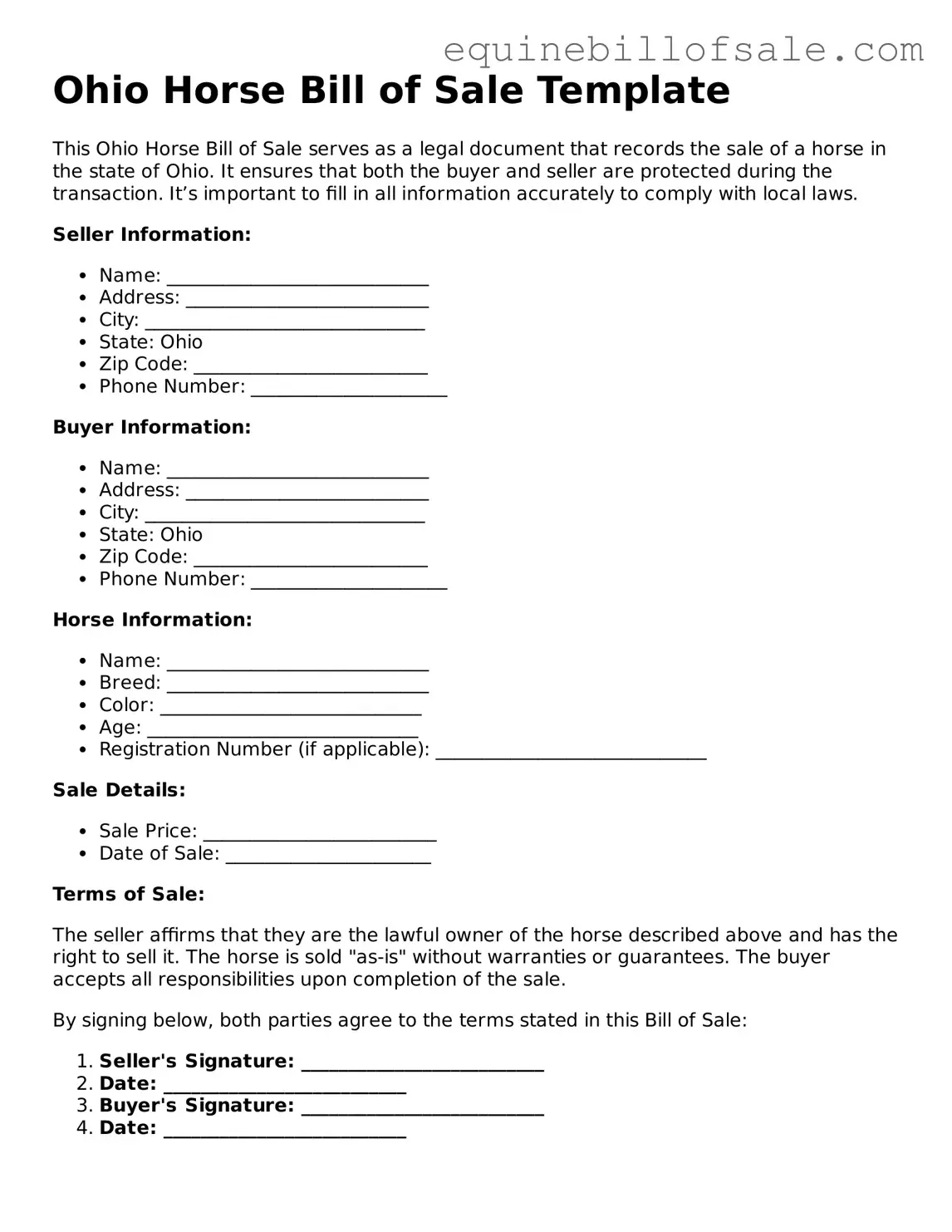What is an Ohio Horse Bill of Sale?
The Ohio Horse Bill of Sale is a legal document that records the sale of a horse from one party to another. It serves as proof of ownership transfer and outlines essential details about the horse, the seller, and the buyer. This document is crucial for both parties to ensure clarity and protection in the transaction.
Why is a Bill of Sale important when selling or buying a horse?
A Bill of Sale is important because it provides a written record of the transaction. This record can help prevent disputes over ownership and can be used to establish legal rights if any issues arise in the future. Additionally, it may be required by some insurance companies or for registering the horse with certain organizations.
What information should be included in the Ohio Horse Bill of Sale?
Typically, the Bill of Sale should include the names and contact information of both the buyer and seller, a detailed description of the horse (including breed, age, color, and any identifying marks), the sale price, and the date of the transaction. It may also include any warranties or guarantees regarding the horse's health or behavior.
Do I need to have the Bill of Sale notarized?
While notarization is not a requirement for the Bill of Sale to be valid in Ohio, having it notarized can add an extra layer of security and authenticity to the document. This can be particularly helpful if there are any disputes in the future, as a notarized document can serve as stronger evidence in legal matters.
Can I create my own Horse Bill of Sale, or do I need to use a specific form?
You can create your own Horse Bill of Sale as long as it includes all the necessary information. However, using a standard form can simplify the process and ensure that you don't miss any critical details. Various templates are available online that can guide you in drafting a comprehensive Bill of Sale.
Is there a specific format I should follow for the Bill of Sale?
While there is no strict format required, a clear and organized layout is essential. Start with the title, followed by the date of the transaction. Then, include the buyer and seller information, horse details, sale price, and any terms or conditions. Finally, both parties should sign and date the document to finalize the sale.
What should I do if I lose the Bill of Sale?
If you lose the Bill of Sale, it is advisable to create a replacement document. Both the buyer and seller can sign a new Bill of Sale that includes the original transaction details. Keeping copies of important documents in a safe place can help avoid this situation in the future.
